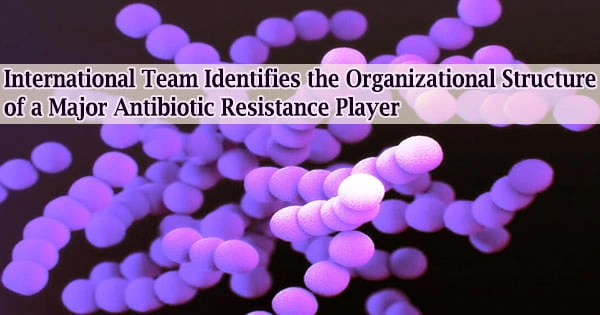As the prevalence of bacteria that are resistant to antibiotics rises, researchers are working to find a way to inhibit the Type IV secretion system (T4SS), a protein complex on the surface of bacterial cells that allows them to swap DNA with nearby bacteria and resist antibiotics.
The structure of the T4SS complex has now been clarified thanks to a partnership between computational biologist Qian Cong, Ph.D., of UT Southwestern, and molecular biologists at the University of London. This information provides a blueprint that could be used to develop drugs that slow the emergence of antibiotic resistance. Their findings were published in Nature.
“For the first time, we determined the 3D structure of the entire T4SS complex,” said Dr. Cong, Assistant Professor of Biophysics in the Eugene McDermott Center for Human Growth and Development at UTSW.
Gabriel Waksman, Ph.D., led the team in London. His group has spent more than 20 years studying T4SS, particularly how it builds a pilus, a thin, hollow structure that connects to adjacent bacteria to share genes.
In order to better understand the structure of T4SS, his team employed cryo-electron microscopy (cryo-EM), a technique that freezes proteins and using electron beams to produce high-resolution microscopic images. Since the T4SS complex is larger than 99.6% of all those already included in the global library of protein structures, this was no little accomplishment.
In order to develop structural predictions for the T4SS protein sequences from various bacteria and compare them to the cryo-EM data, Dr. Cong used her knowledge in statistics and machine learning.
In addition to the contribution we have made toward the development of drugs to slow the spread of antibiotic resistance genes, this study showcases the power of modern computational methods to validate experimental results and suggest functional insights beyond available experimental data.
Dr. Qian Cong
Her computational research provided support for the cryo-EM findings and offered an explanation for how the T4SS works. She predicted how pilus assembly takes place, even though T4SS’s involvement in this process is well known.
With this forecast in hand, Dr. Waksman’s group was able to introduce particular mutations into the pertinent parts of the complex and prove Dr. Cong’s theory in living bacteria.
“In addition to the contribution we have made toward the development of drugs to slow the spread of antibiotic resistance genes, this study showcases the power of modern computational methods to validate experimental results and suggest functional insights beyond available experimental data,” said Dr. Cong, a Southwestern Medical Foundation Scholar in Biomedical Research.
Other researchers who contributed to this study include Ke?vin Mace?, Abhinav K. Vadakkepat, Adam Redzej, Natalya Lukoyanova, Clasien Oomen, Nathalie Braun, Marta Ukleja, Fang Lu, Tiago R. D. Costa, and Elena V. Orlova of the Institute of Structural and Molecular Biology, Birkbeck College, University of London; and David Baker of the University of Washington.





